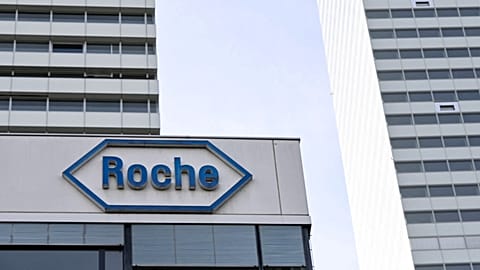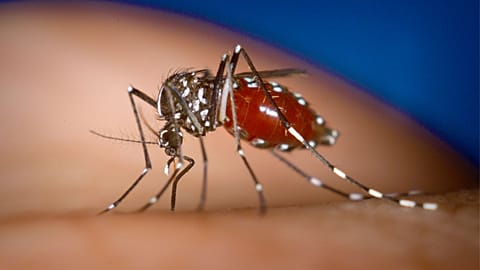Aggressive glioblastoma tumours could be in trouble: a breakthrough discovery successfully wiped out cancer cells in mice.
Researchers have developed a method that could cause cancerous cells to die of stress.
Their research has yielded promising results with glioblastoma, one of the most common and aggressive brain tumours among adults. This condition is estimated to affect roughly 19,000 people each year in the EU.
The treatment for glioblastoma hasn’t changed much since the early 2000s and consists of chemotherapy, radiotherapy and surgery. The median survival time for a patient diagnosed with the condition is 15 months.
Cancer cells are naturally stressed
"Cancer cells are stressed cells, they're not normal, they're fundamentally stressed and they end up using stress response mechanisms to gain advantages,” said Eric Chevet, head of a cancer research laboratory of the French National Institute of Health and Medical Research (INSERM) since 2015.
“The advantage is that they are more resistant, stronger and able to migrate, so they are better able to withstand additional stresses such as chemotherapy," he told Euronews Next.
In the case of glioblastoma, the cells use a protein called IRE1 as part of a stress response mechanism that makes them more resistant to cancer drugs. This phase is called “target identification”.
The researchers sought out to see whether influencing this process could weaken the cancerous cells. And they just published promising results in the journal iScience.
The study was a collaboration between researchers from INSERM in France and the University of Gothenburg in Sweden.
They proceeded in three steps.
The team in Gothenburg first worked on computational models as part of “in silico” research - in reference to the silicon in computer chips.
They screened around 15 million molecules, running simulations to predict how these would react with proteins in the body. One was identified as possibly useful: the Z4P molecule.
The second step was a cellular test to examine the impact of that molecule on the cancer cells.
They found that the Z4P molecule didn’t only make the cancer cells less resistant, it also blocked their ability to migrate - one of the propensities that makes glioblastoma such an aggressive condition.
Finally, the researchers tested their findings in vivo: they used the molecule to target cancer cells in mice in combination with a drug called temozolomide (TMZ), a type of chemotherapy traditionally used in glioblastoma.
They found that the combined treatment weakened the cancerous cells’ resistance to stress, and significantly shrunk the size of the tumours - and the role of Z4P molecule was clear.
When using only TMZ, the tumours returned after a period of time - between 100 and 150 days. But with the combination of TMZ and the Z4P molecule, all cancer cells disappeared, and the mice had no cancer relapse after 200 days.
What’s next?
Despite these promising results, we are still far off from a new drug, let alone a miracle pill.
Chevet warns it likely won’t be another 15 years before these findings yield a new therapeutic option for patients - and he stresses that’s an optimistic prediction, barring any obstacles on the way.
The molecule needs to be modified in order to become more effective against cancer cells and to be tested on more animals before it can be trialled in humans.
For the next step of this research, Chevet’s INSERM lab will be working with another French team, the Rennes Institute of Chemical Sciences.
Further down the line, the findings may bring hope for treatments against other types of cancer.
“We have also begun studying the use of our substance on other aggressive tumour forms like pancreatic cancer, triple-negative breast cancer and certain liver cancers”, said Leif Eriksson, a professor of physical chemistry at the University of Gothenburg and co-author of the study.


















